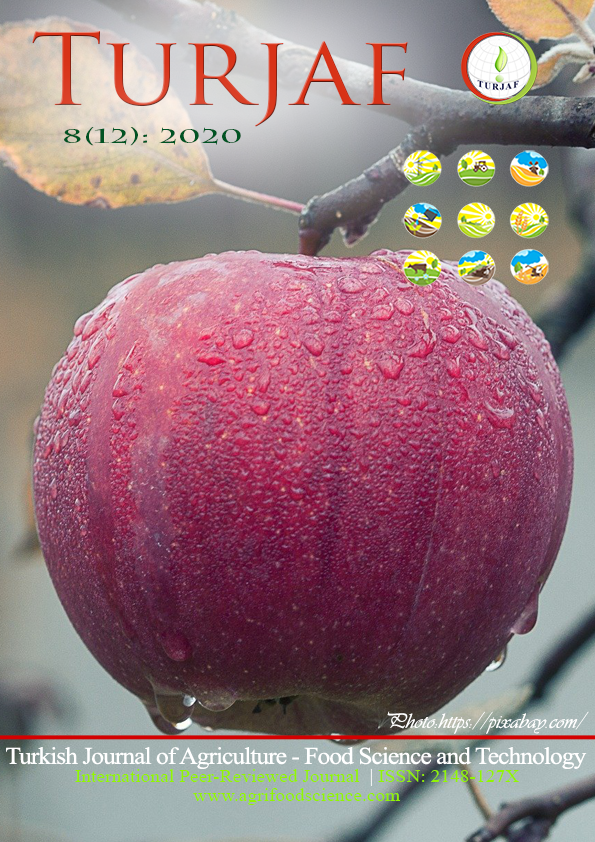Fertility Traits of Kangal Akkaraman Sheep Reared in Breeder Conditions in Sivas Province
DOI:
https://doi.org/10.24925/turjaf.v8i12.2651-2656.3850Keywords:
Kangal Akkaraman, Sheep, Lamb, Fertility, ImprovementAbstract
The aim of the study was to determine the fertility traits of the Kangal Akkaraman sheep in Yildizeli and Central districts of Sivas. In this study, six years data obtained from breeders between 2013 and 2018 were used in National Animal Improvement Project coordinated by the Turkish Ministry of Agriculture and Forestry. In the first year of the study, 70 enterprises in 48 villages from both districts included in the projects and these were reduced to 57 enterprises in 33 villages in the sixth year. During the six-year period, 86116 lamb records obtained from a total of 76383 ewes in all enterprises were evaluated. Overall average birth rate was 92.7%. While the differences between years were statistically significant, differences between districts were not significant. Thetriplet births were also observed but they were not evaluated separately because of their low rate (0.1%), so they were included in twin births and evaluated as twins. The average twin birth rate was 22% and differences between years, districts and mating periods (five months between August and December) were significant for that. Overall average weaned lamb rate or the survival rate of the weaning period was 91.3% and differences according to years, districts and lambing periods (five months between January and May) were statistically significant for that. According to the values obtained from 5147 lamb records that were born from 4242 ewes of known age in a sub-project of year 2013; the ages (1-10) of sheep were found to have an effect on the birth type, while it was found to be statistically insignificant for the survival rate. According to the results of the research, it would be useful to take into account the factors that increase fertility in order to maximize profitability in the study area and enterprises with similar conditions.Downloads
Published
27.12.2020
How to Cite
Oğrak, Y. Z. (2020). Fertility Traits of Kangal Akkaraman Sheep Reared in Breeder Conditions in Sivas Province. Turkish Journal of Agriculture - Food Science and Technology, 8(12), 2651–2656. https://doi.org/10.24925/turjaf.v8i12.2651-2656.3850
Issue
Section
Research Paper
License
This work is licensed under a Creative Commons Attribution-NonCommercial 4.0 International License.









